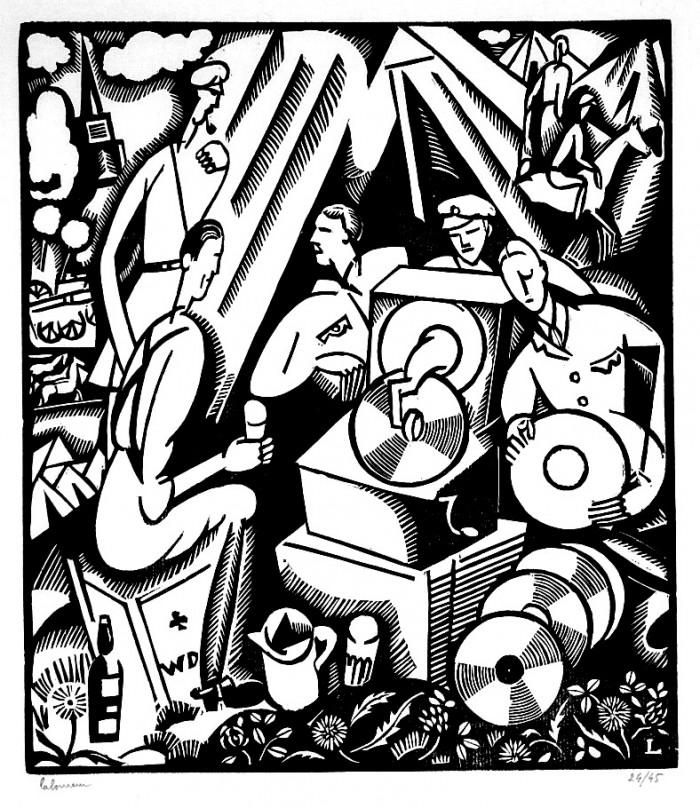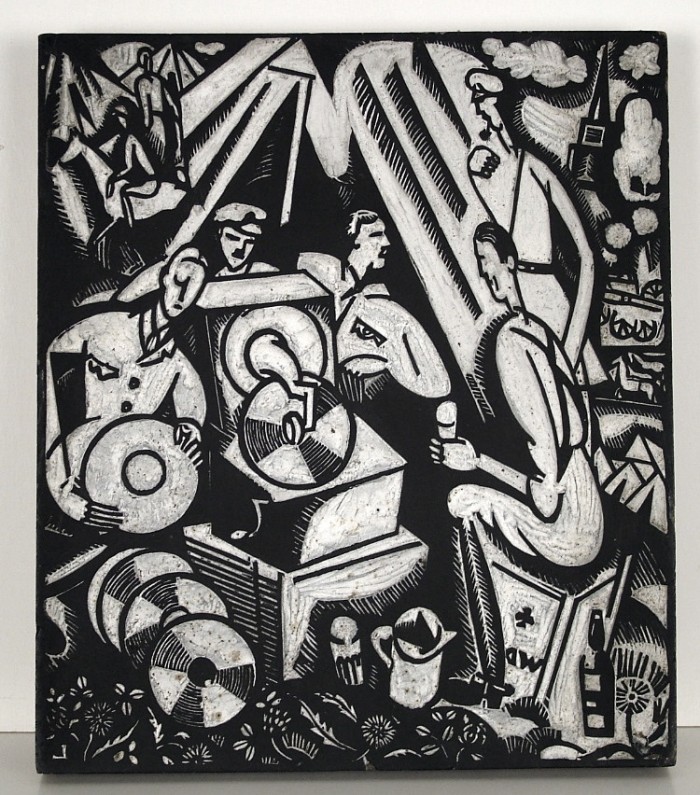Le Gramophone – Woodcut – The Print and the Block
Jean-Emile Laboureur (1877-1943), Le Gramophone, 1918-21, woodcut – both the woodblock and a print from the block. The print is signed in pencil lower left, and numbered lower right (24/45) [also initialed in the block lower right]. Reference: Sylvain Laboureur 712, only state, total printing of 45 impressions. Both in excellent condition; the print on a cream wove paper, a nick at left edge, some handling folds in margins; the full sheet with deckle edges, both the print and block are 9 3/4 x 8 1/2, the sheet 17 1/2 x 11 3/4 inches. The block is about 3/4 inch thick.
Provenance: the block: Henri Petiet (with his stamp verso, Lugt supplement 2021a)
A fine impression of both the print and block. The latter is black, as inked, with a white/chalk surface where the block was cut.
Though Laboureur worked on this block starting in 1918, according to his notes, he finished it in 1921, and took impressions in 1922. But the notion of using the gramophone (a prequel to the record player, which came before all sorts of current devices for playing music) as the basis for compositions came as early as 1916, when he created an engraving (L. 156) with a similar composition as a frontispiece for X-M Boulestin’s Aspects Sentimentale du Front Anglais (and of course this is WWI, soldiers playing records, drinking). In this volume Boulestin wrote: “Ah! Le precieux instant d’ardeur sentimentale! Jamais, jamais nous n’avions tant aime la vie! Mais quand se tait le magique gramophone, on tousse, on se secoue et on se verse un autre whisky-and-soda. L’emotion s’est enfuie”

